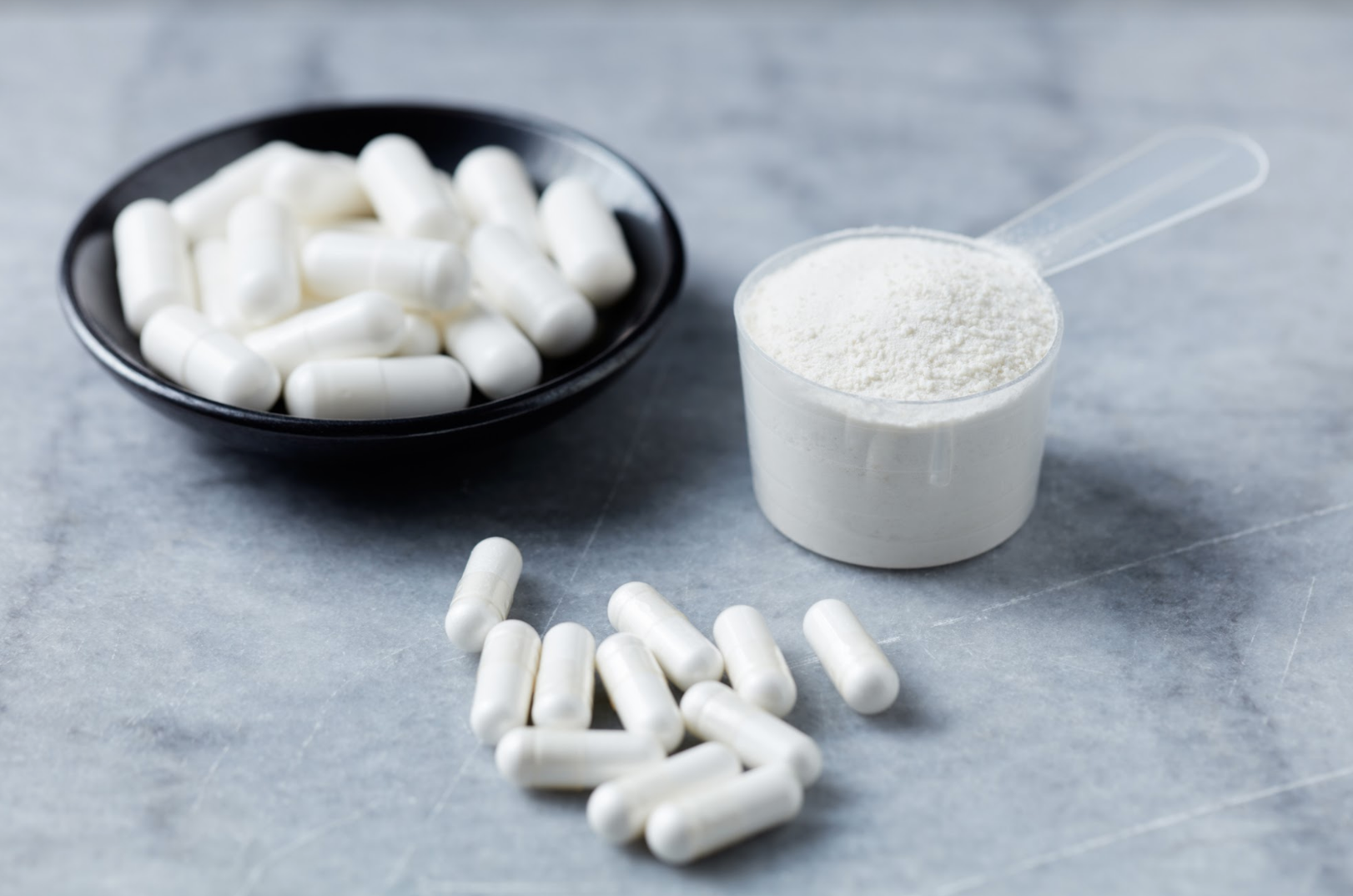As we talked about in Part 2 of this series, creatine as a supplement has evolved and matured since it became a staple of the bodybuilding and sports industry in the 1990s.
One of creatine’s biggest areas of growth has to do with the manufacturing side of things. In general, high-quality creatine has become easy to make and easy to acquire.
This article takes a look at how creatine manufacturing has developed over time so you get a better idea of what to look for in a supplement, and a better understanding of how the creatine products you ingest are made.

Today, creatine comes in all shapes, sizes, textures, and packaging, but standards have been set by Health Canada and the FDA to ensure high quality products.
2007 FDA Ruling Speeds the Evolution of High-Quality Creatine
In 2007, the U.S. Food and Drug Administration (FDA) announced a rule to help establish better Good Manufacturing Practices (GMPs) for dietary supplements in the USA.
Essentially, the goal of the 2007 ruling was to protect the consumer by ensuring that there are set processes a supplement manufacturer must follow to ensure the finished product’s quality and safety.
It did this by requiring companies to label and package their products accurately, as well as test and evaluate them for contaminants or impurities. And on top of these manufacturing controls—as well as labelling and packaging rules—companies have been required since 2007 to report any serious supplement-related adverse events to the FDA.

Adherence to the FDA enforced GMPs attempts to assure the identity, strength, quality, and purity of supplement products by requiring that manufacturers adequately control manufacturing operations.
A Quick Lesson on Supplement Industry Set-up
Years of regulatory adjustments and changes, such as the 2007 GMP ruling, have shaped the supplement industry. It takes a lot of expertise and equipment to make the raw ingredients, and then takes another set of skills, equipment and facilities to use the raw ingredients to make capsulated, blended, flavoured, colored, packaged and labelled finished products (to GMP standards, of course).
For this reason, the industry is split into three main “layers”:
- The raw ingredient manufacturing: This is largely huge-scale chemical processing, distilling and fermentation done in plants. It is highly-specialised, and requires highly trained scientists—kinda like Walter White’s lab set up in Breaking Bad—but on a massive (and legal) scale.
- The Contract Manufacturer: This is usually a medium to large company based in the country where the supplement will be sold. There are hundreds of contract manufacturers across North America and Europe. They work between the raw ingredient companies and the supplement brands to source ingredients, packaging and even labels to make finished products.
- The Supplement Brand: The brand is the front end of the business. The company owners decide on the formulations of the products they want the contractors to make (often with the guidance of the contractor’s scientists), decide on the packaging and labeling. The brand owners are also responsible for all the marketing and sales of the finished products too.
Making Raw Creatine
Creatine is made naturally in the body by combining three amino acids: Glycine, Arginine and Methionine. (Chemically-speaking it is called a-methyl-guanidinoacetic acid’ or C4H9N302). It is also naturally found in meat—as we explained in Part 1— but only in small amounts, so it would be way too expensive to extract creatine from meat. It’s much cheaper and more efficient to manufacture it synthetically by using two chemicals: Sarcosine, a sodium salt, and a chemical called Cyanamide.
Specifically, reacting the latter two chemicals with water inside a steel, glass-lined reactor (a large vat) produces creatine monohydrate.
It’s important to note that all synthetically-produced creatine, regardless of what kind of creatine a company eventually markets and sells, starts out as creatine monohydrate (Read more about marketing in Part 3).—a dry, pure-finished creatine made up of 88% creatine and 12% water—ready to be bottled by the contract manufacturer.
From there, if a company chooses to sell a different form of creatine, such as creatine malate or creatine ethyl ester, it must take the finished creatine monohydrate and process it further. This means the creatine must be chemically-reacted all over again and bound to the desired compound.

Creatine is made in large chemical manufacturing plants with warehouses full of equipment as show above. It is manufactured as creatine monohydrate and then must be further processed to make other forms of creatine.
This extra work in creating a new form of creatine is also why many of these other “new” forms of creatine are more expensive than creatine monohydrate. See Part 3 of this series to read more about these other types of creatine.
Where is Your Creatine Made?
Since pressure has been placed on manufacturers since 2007 to produce and sell high-quality products, this pressure has also trickled down to China, where much of the world’s creatine supplements are made due to the low cost of ingredients, labor and production. Because of this, China has quickly become an expert in chemical processing and is now highly competitive with European and North American manufacturing companies in both quality and cost. The largest producer of Creatine outside of China is a company called AlzChem AG in Germany. AlzChem makes the well-known Creapure creatine product. However, as the creatine coming out of China has improved, Creapure’s quality advantage has been diluted.
How Do We Know It’s High-Quality?
The process of manufacturing creatine isn’t new; it is well-refined. In fact, creatine today, from China and otherwise, is rarely less than 99.8% pure. The impurities are usually just natural traces of things like iron and sulphate—nothing to worry about.
And to ensure this quality even further, creatine supplement manufacturers are also required to do their due diligence and test all their products under the 2007 GMP requirements. This means the contract manufacturer has to request a Certificate of Analysis (CofA) for any raw ingredients they receive—which gives the manufacturer a breakdown of purity tests carried out on the ingredients after it is made. The manufacturer then has to re-test the ingredients, and the results are compared to that of the CofA they received—which ensures the analysis is correct.
A 1999 report on creatine production in China can be found here.
Are There Manufacturing Risks?
Some chemical substances used in the creatine manufacturing process are highly toxic and must be extracted from the creatine before it can be digested.
In Canada, Health Canada requires all creatine products to be tested for these substances before they can be sold. This is unusual, though; the same is not true in the United States.
Blonyx products are manufactured in the United States, but since they are sold in Canada, they are held to the rigorous Health Canada supplement standards as well as the 2007 GMPs. See our test results from BSCG.
To ensure you’re getting a high-quality product, your best bet is to research the company you’re buying creatine from. Make sure they’re following the proper procedures and doing their due diligence to deliver a high-quality product. If you are in doubt, ask the company to provide you with the information you require. They should have no issues in disclosing at least an outline of the processes they follow to ensure their products are of high quality.
Here are links to all parts of this series:
Part 1: An introduction for layman
Part 2: Creatine’s history, it’s research record and it’s known side effects.
Part 3: Types of Creatine, which are the best, and are any dangerous?
Part 4: Making and marketing creatine supplements
Part 5: The myths and truths about creatine


